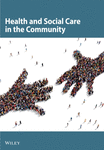A cohort study on the active life expectancy of stroke patients using a community-based stroke registry in a Japanese rural district
Abstract
In order to support patients with a history of stroke, public health nurses, hospitals and ambulance stations in and around the Oyabe Health District (49 000 population, rural area) provided initial information for a community-based stroke registry starting from 1966. This stroke registry was established by the present authors to record the patients' status and provide social services at home. The information from 1032 stroke patients was compiled into a register during the period 1966–79. Of 494 patients identified as living at home in 1980, we were able to maintain contact with 452 patients (91.5%) and these 452 stroke patients were defined as the study cohort. They were asked several questions on physical status, mobility status, central nervous function, emotional problems and living conditions. These data were used to construct the baseline of this study cohort and we gathered information on mobility status every year until 1993. The risk factors reducing their active life expectancy were investigated using Kaplan-Meier's method, log-rank test and Cox's proportional hazard model. For active life expectancy, the end point was defined as commencement of immobile status or death. Emotional problems (P < 0.01), difficulty in bathing (P < 0.05) and disorder of memory function (P < 0.05) were shown to contribute to a reduction in their active life expectancy after adjustment for age, sex, years after stroke, types of stroke, mobility status and living with spouse.




